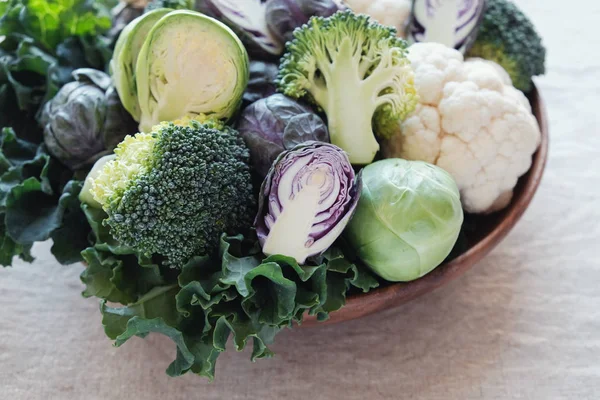Whenever a person think about a flower, then he thinks of flowers like rose, sunflower, marigold, tulips, daisies, etc. which aren’t providing any nutritional benefits to the human body. But there are some other flowers which are normally used as a vegetables and it can provide nutritional benefits as well. These are bok choy (chinese cabbage), broccoli, calabrese, cauliflower, courgette blossom, jerusalem artichoke, marrow blossom, rapini, squash blossom
Flowering Vegetables are so called because they are having the shape of flowers. They are usually small in size and appear like many flower buds clusters together. With essential nutrients, flowering vegetables also bear some phytochemicals known as isothiocyanates which help in the prevention of the production of cancerous cells. Because of these reasons, these vegetables are called functional vegetables.
List of some Flower Vegetable
- Bok Choy
- Broccoli
- Cauliflower
- Courgette Blossom
- Rapini
- Squash Blossom
1. Bok Choy
Bok Choy is a variety of Chinese white cabbage that falls into cruciferous vegetable category along with kale, Brussels sprouts, and broccoli.
Also called pak choi, it’s part of the Brassica genus of plants and is native to China. In fact, within China, it’s the most widely eaten brassica vegetable. However, people consume it worldwide.

You may be aware that cruciferous vegetables can be a key part of a healthy diet. However, you might be wondering what exactly bok choy has to offer.
Bok Choy is very nutritious
Similar to other leafy greens and cruciferous vegetables, bok choy is full of health-promoting nutrients, including a wide array of vitamins and minerals.
Bok choy is an especially good source of vitamins C and K. It also contains some fiber, a critical nutrient found only in plant foods. Fiber supports digestive health and helps reduce the risk of many chronic diseases
How to incorporate it into your diet
People often cook bok choy in stir-fries and soups, particularly in Asian cuisine.
You can consume all parts of the bok choy plant, including its white stems and green leaves.
Here are some ideas for how to prepare and eat bok choy:
- Chop it and sauté it with olive oil, garlic, and ginger as a side dish or to top a grain like rice or quinoa.
- Dice it and add it to an Asian-inspired soup recipe.
- Shred it and toss with other vegetables to make a raw salad.
- Chop it and cook in a pan with bell peppers, carrots, broccoli, and water chestnuts to make a stir-fry.
- Slice lengthwise, drizzle with olive oil and salt, and roast in the oven.
- Use in place of lettuce or other leafy greens on a sandwich.
- Dice it finely and add it to fried rice.
2. Broccoli
Broccoli has a fantastic nutritional profile that offers plenty of potential health benefits.
It’s rich in fiber, vitamin C and antioxidants.
Broccoli can be prepared in numerous ways, including sauteed, boiled, or roasted, but it can also be served raw in salads or with dips.
This article explores whether you can safely eat raw broccoli and the advantages and disadvantages of eating it raw or cooked.

How to incorporate it in your diet
While it may be more commonly served cooked, broccoli can be nutritious addition to your diet without hardly any preparation.
Here are some ideas for how to prepare and eat Broccoli:
- To enjoy raw broccoli, first clean the head of broccoli under cold running water.
- Use your fingers to rub clean any noticeably dirty spots and gently pat the broccoli with a paper towel until it’s completely dry.
- Using a sharp knife, cut the broccoli florets from the main stem into bite-sized pieces.
- Both the florets and stems are completely safe to eat. However, the stems may be stringy and tougher to chew. The thinner the stems are cut, the easier they’ll be to chew.
- At this stage, the broccoli can be enjoyed just as it is, though you may choose to boost the flavor by dipping the florets in a yogurt-based dressing, hummus, or another vegetable dip.
- You can easily add broccoli to a raw vegetable platter or mix it into a tossed salad or pasta dish to add texture, flavor, and nutritional value.
3. Cauliflower
Cauliflower is a cruciferous vegetable that looks like a white version of its cousin, broccoli. Like broccoli, the tightly bunched florets of cauliflower are connected by a thick core, often with a few light leaves surrounding it.
While white is the most common color, you’ll also find cauliflower in shades of orange, purple, and green. No matter the color, the taste is the same: mild, slightly sweet, a little nutty.

Cauliflower originally came from the Mediterranean region and arrived in Europe around the end of the 15th century. It’s an offshoot of a type of wild cabbage that’s also the ancestor of kale, Brussels sprouts, and kohlrabi.
Here are some ideas how to prepare Cauliflower
Cauliflower is a versatile and can be prepared in a number of ways :
- Steam it. The simplest way is to steam it. You can steam the whole head or cut it into florets.
- Roast it. Cut the head of cauliflower into steaks or florets, spread them on a cooking sheet, drizzle with olive oil, and sprinkle with salt and pepper. Roast in the oven until it’s golden.
- Puree it. Once cauliflower has been cooked, it can be pureed until it’s smooth. Some people use it as a substitute for cream sauces or add it to smoothies.
- Mash it. Boost the nutrition value of mashed potatoes by steaming some cauliflower and mashing it into them. Or skip the potatoes and opt for low-carb mashed cauliflower instead. You also can mash cauliflower into pizza dough for a lighter crust.
- Grate it. Steam cauliflower and then grate it into a rice-like texture.
4. Courgette Blossom
Courgette Blossom, (or squash) are in fact the flowers of the courgette, or zucchini bush which indeed happens to be 100% edible.
There are two sorts of flower : Male and Female.
The Female is the flower attached to the immature fruit. On the other hand we have the Male flowers that are the only ones that you would find in the grocery store, and they are a very popular ingredients in the Italian Cuisine. The blossom is attached to a long, green and hairy stem.

When growing courgettes at home it is advised to keep at least one male flower for each plant to help the pollination process.
You can also use the female flowers in cooking. The only reason why they are not sold in the shop is because they are less eye-catching due to the lack of the stem, element that also keeps them fresher and more lasting than the females.
The best time to harvest both male and female blossom is typically in the morning, when they are fully open and ideally without any grey/black spots or sign of deterioration.
How to make Courgette Blossom
To make this plant based pesto sauce to be used to coat our favorite pasta or to enrich any preparation of your choice we have to go through only three easy steps :
- Step I : Saute the courgette blossom in a hot pan with a kiss of olive oil and garlic.
- Step II : Add sauteed flowers and garlic with the rest of the ingredients and blend to a smooth paste.
- Step III : Coat your favorite pasta or use the courgette blossom as you please.
5. Rapini
Rapini, which is a green vegetable that is sometimes called Italian Broccoli and “Sarson or Saro da Sag” in India. It has a long stem with small buds and small, thin leaves, and originated in the Mediterranean. You can eat all parts of rapini, although the stems usually take longer to cook than the rest of the plant. The rapini leaves have a slightly bitter taste, while the stems and buds offer a more delicate flavour. Rapini is a suitable addition to several different dishes.

Here are some steps how to prepare Rapini :
- Step I : Select rapini that is slender and firm to the touch, with a bright green color and not many opened buds.
- Step II : Trim off the bottom ¼-inch of the rapini stem with a sharp knife. Remove the stems from the leaves and buds with your knife.
- Step III : Bring a pot of water to a boil and add the stems to the water. Allow them to cook for about six minutes, until tender but still with texture.
- Step VI : Add the rapini leaves and buds with about two to three minutes left in the cooking time.
- Step V : Remove the rapini from the pot and serve as a side dish or cut up and add to pasta, rice, omelets, mashed potatoes or quiche.


Leave a Reply